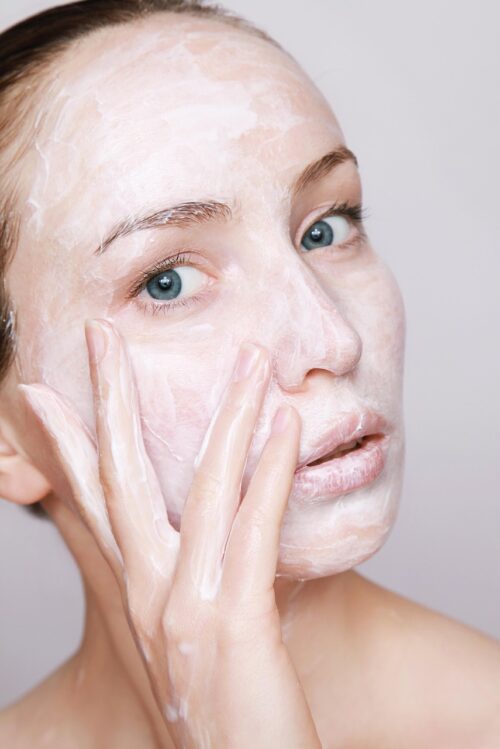As the season changes and we move into cooler, crisper weather, your skincare routine might need an update. Lower humidity, fluctuating temperatures, and reduced sun exposure can all affect your skin differently than in summer.
One of the greatest mistakes one can make when taking care of their skin is to stick to the same products year-round, as skincare habits should shift with the weather. Experts at Fresha, the go-to booking platform for beauty and wellness, reveal the five essential tips for maintaining healthy, glowing skin this autumn.
Check that you’re applying sunscreen correctly
Just because the days are shorter doesn’t mean you can skip SPF. Even in autumn and winter, UV rays penetrate clouds and could contribute to hyperpigmentation, premature aging, and long-term skin damage. A broad-spectrum SPF 30 or higher with at least a 4-star UVA rating is the correct choice, but the part that many get wrong is the application. The average adult needs at least two tablespoons for their whole body, a nickel-sized dollop to the face alone.
You need it on cloudy days and during quick errands outdoors as well. Sunscreen should be reapplied every two hours, especially if you’re sweating, or towel-drying. Experts also suggest pairing your SPF with antioxidant-rich serums in the morning to neutralize environmental stress throughout the day.
Apply thicker lotions when the temperature drops to prevent breakouts
The air in autumn is typically drier than in summer, and your skin can react to sudden changes in temperature, whether you’re turning up the heating indoors, flying long-haul, or heading somewhere hotter on holiday. Cold air, low humidity, and recycled indoor air can all strip moisture from your skin, leading to dryness, tightness, or even eczema flare-ups.
This is when lightweight summer lotions won’t cut it. Switch to thicker, ceramide-rich creams that help rebuild the skin barrier, and apply hyaluronic acid or glycerine on damp skin to lock in hydration. For lips and hands look for occlusive balms with shea butter or lanolin to seal in moisture.
Use the two-week rule when switching products to help your skin adapt
As the season shifts, so should your skincare. However, rather than making sudden changes and switching your routine overnight, easing into new products over two weeks will help your skin adapt to them more easily, especially if you’re introducing retinol or exfoliating acids.
As part of this gradual adjustment, incorporating a gentle exfoliant (such as lactic acid or mandelic acid under 10%, or a soft physical scrub with smooth, rounded particles) once or twice a week can help get rid of dry, dull skin in winter or clear up clogged pores as the weather warms up in spring. But be careful, as exfoliating too often can irritate your skin and do more harm than good.
Maintain these three habits year-round
While your product lineup should shift slightly with the seasons, certain habits should remain throughout the year. Daily cleansing, moisturising, and sun protection are non-negotiables.
Lifestyle factors like travel, stress, heating, and not getting enough sleep can negatively impact skin health. For example, the lack of fresh air in an airplane cabin can dehydrate the skin and cause post-flight dryness. Hydrating face masks containing hyaluronic acid, aloe vera and glycerine can aid recovery and prevent symptoms such as tightness, flakiness, dullness, or increased sensitivity. These ingredients draw moisture into the skin and help retain water, as well as soothe irritation and reduce redness.
Treat yourself: professional support can elevate your routine
As the seasons shift into autumn, your skin may start to feel drier or more sensitive, so switching to hydrating facials or barrier-repair treatments once a week can help your skin adjust. Seeing a professional between seasons can give your routine a helpful boost and target any specific issues before they become long-term concerns.
By anticipating the effect of weather changes and adjusting your products and treatments in advance, you’ll give your skin the best chance to thrive all year long.
Sources:
- Skin Cancer Foundation – Ask the Expert: How Much Sunscreen Should I Be Using on My Face and Body?
- CeraVe – Ceramides & Hyaluronic Acid: Their Role in Achieving Beautiful Skin
- True Botanicals – Mandelic Acid vs. Lactic Acid: What To Know
Credit to https://www.fresha.com/

The Views Expressed In This Article Belong Solely To The Original Author, And We Assume No Responsibility For Its Accuracy, Completeness, Or Any Consequences Arising From Its Use.
Te Puede Interesar
-
Best Coffee Cities In America
09/17/2025 -
El Régimen Intensifica La Violencia Carcelaria
09/16/2025 -
Røz Se Une A Coachella
09/16/2025


